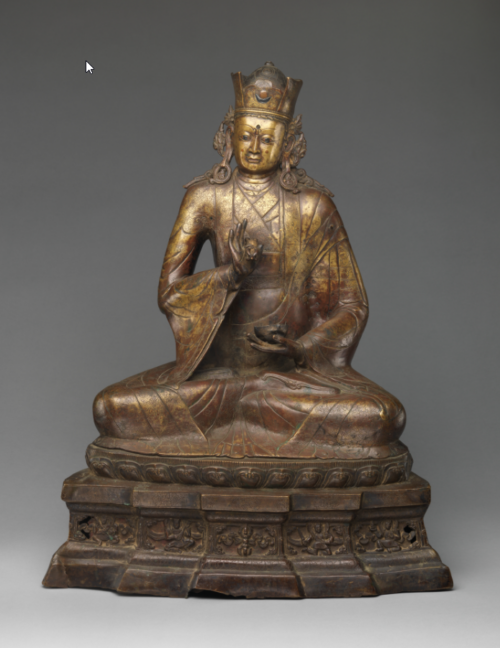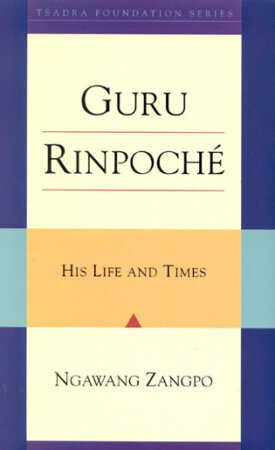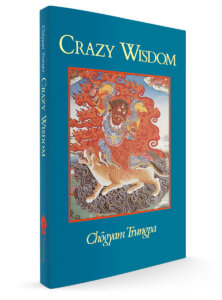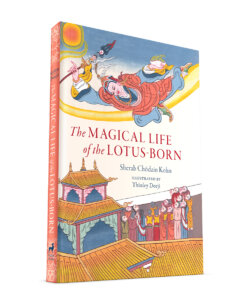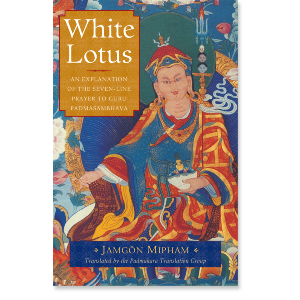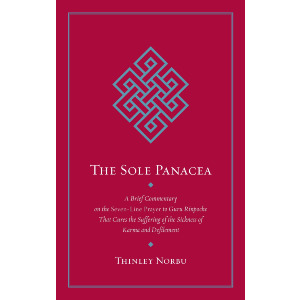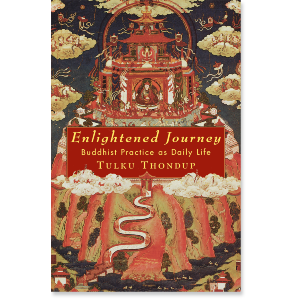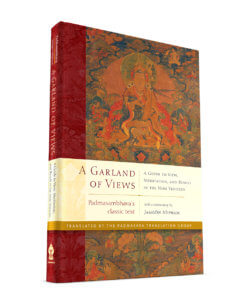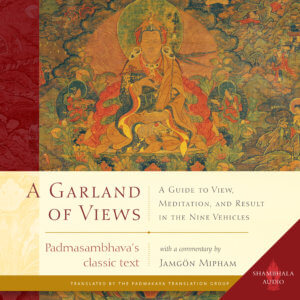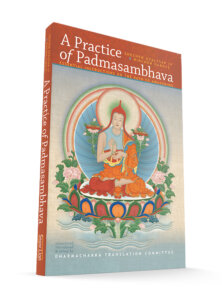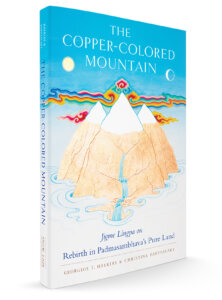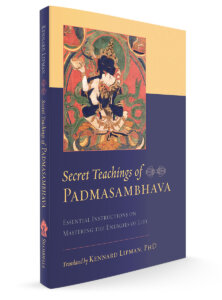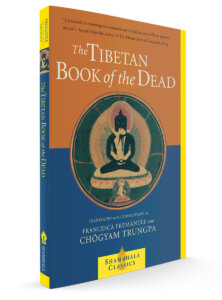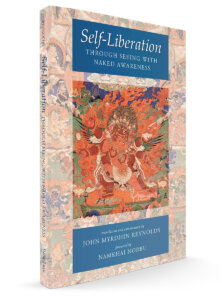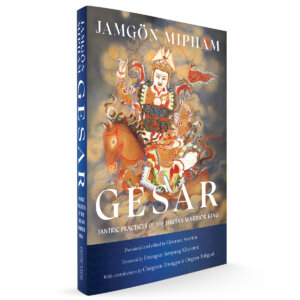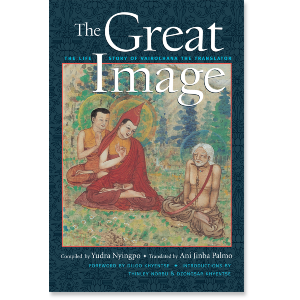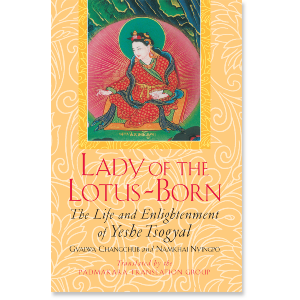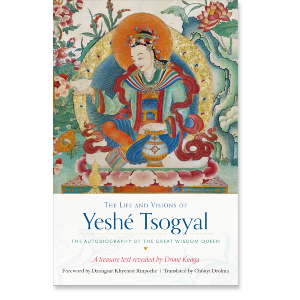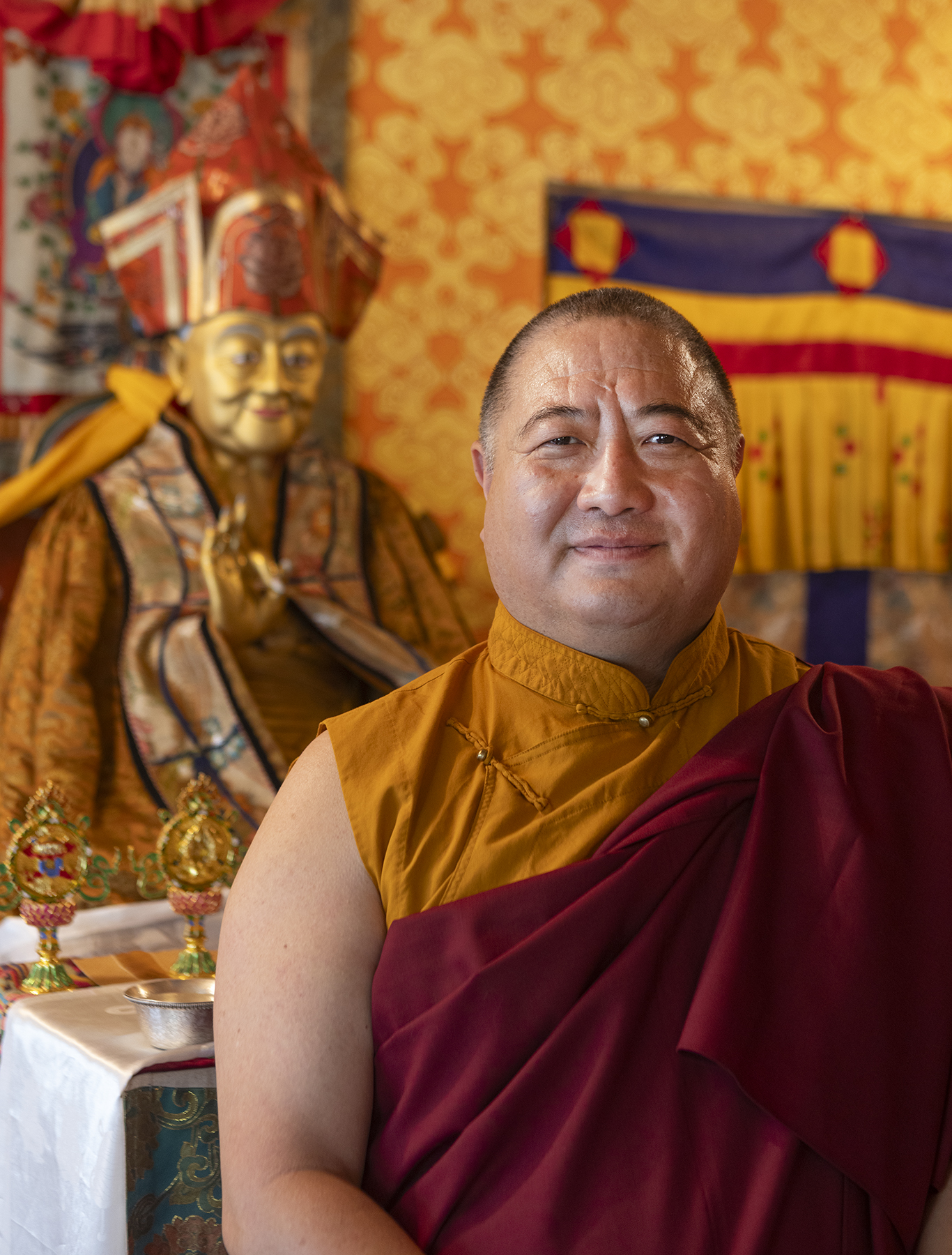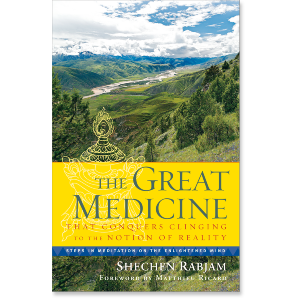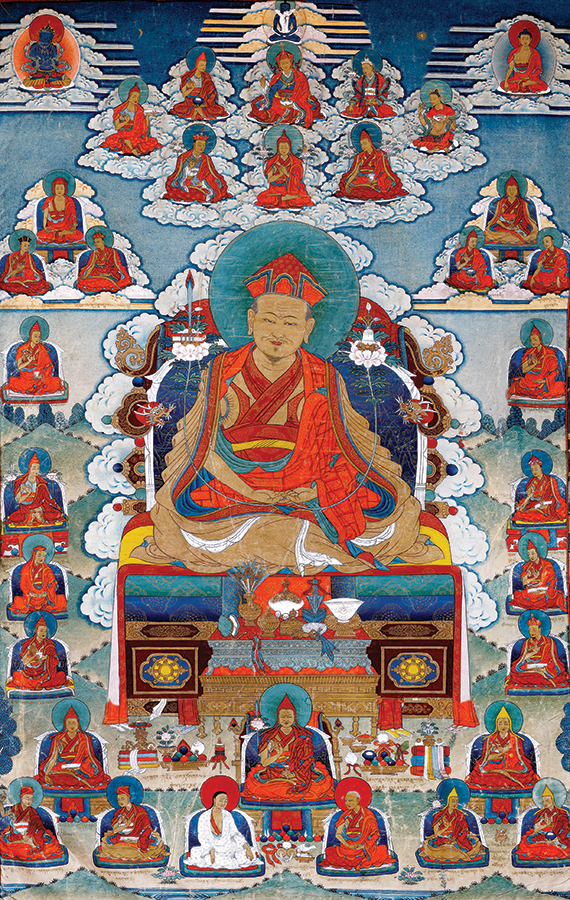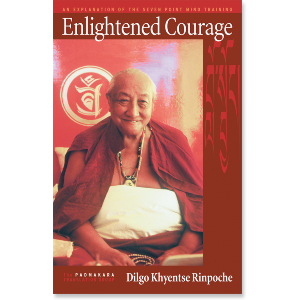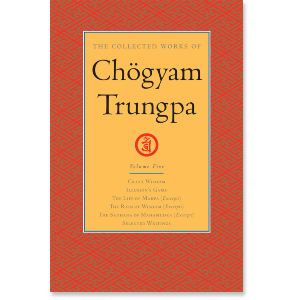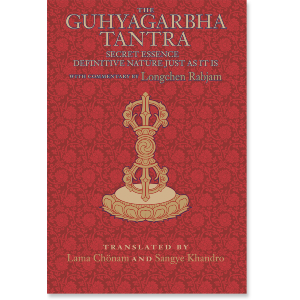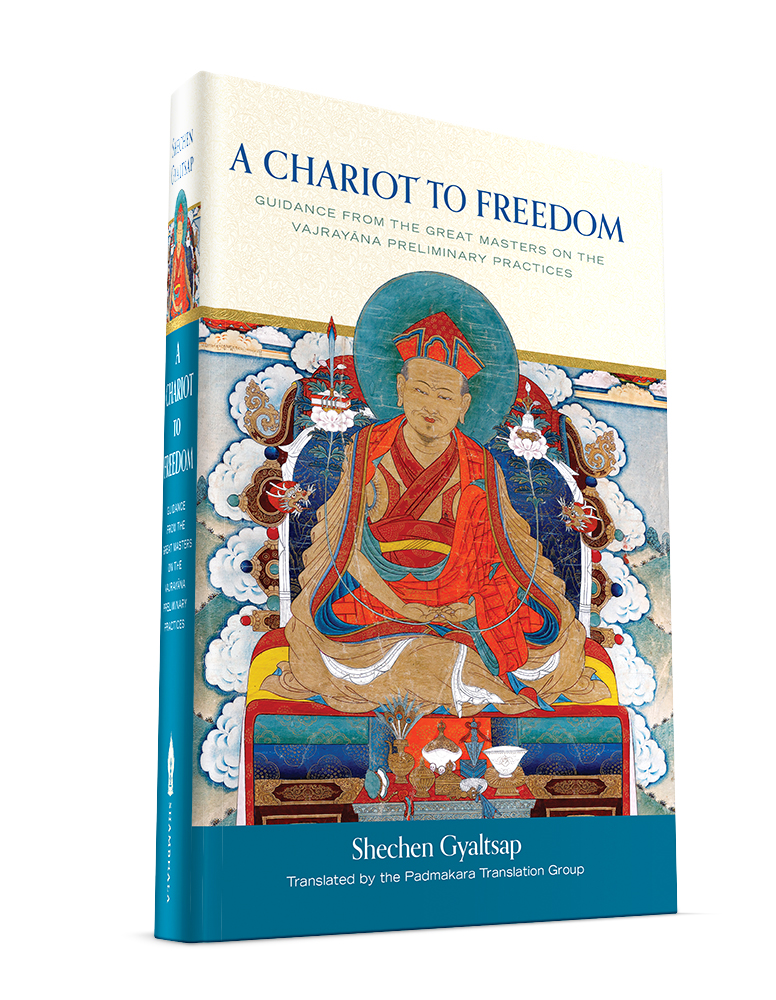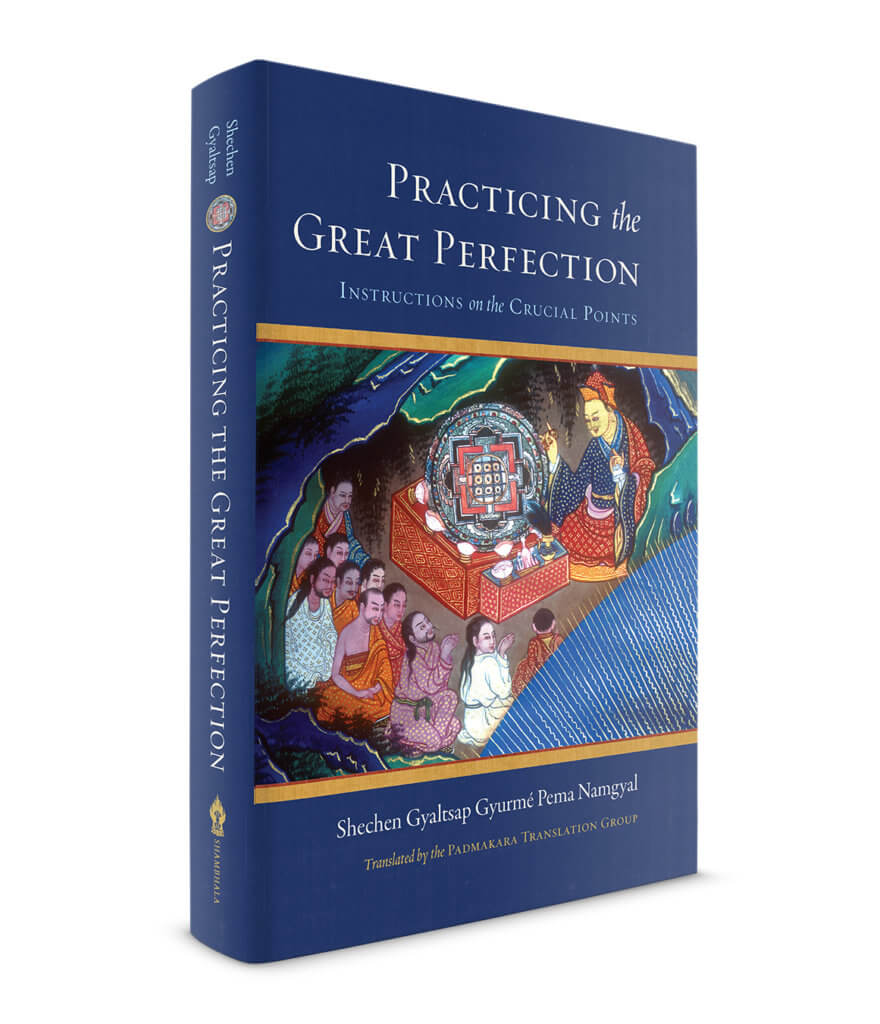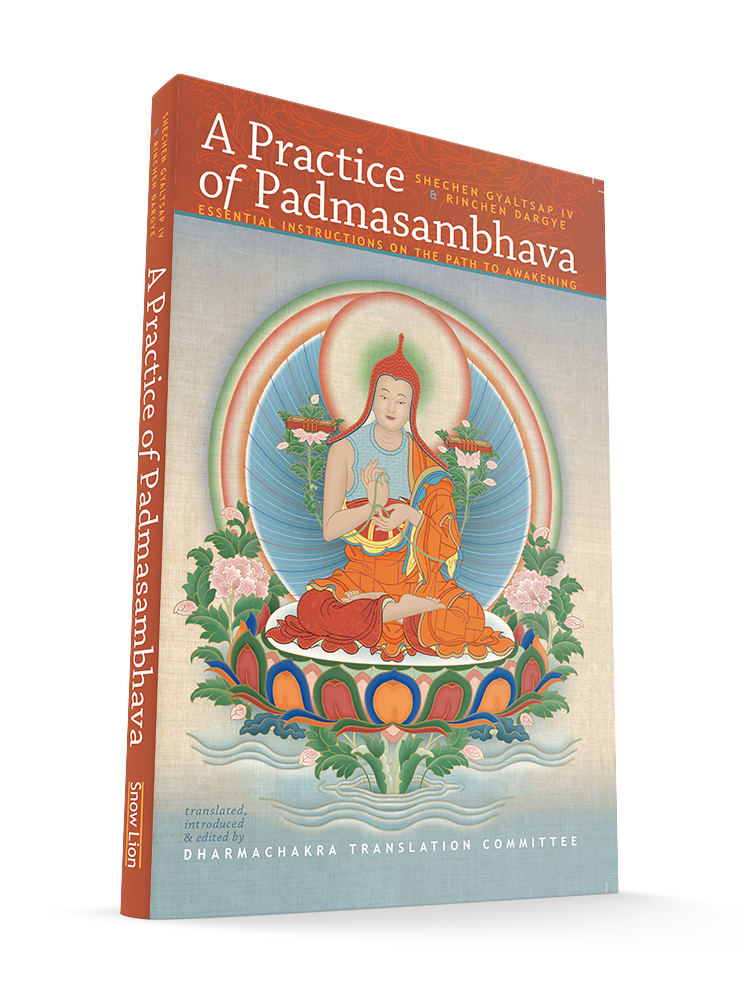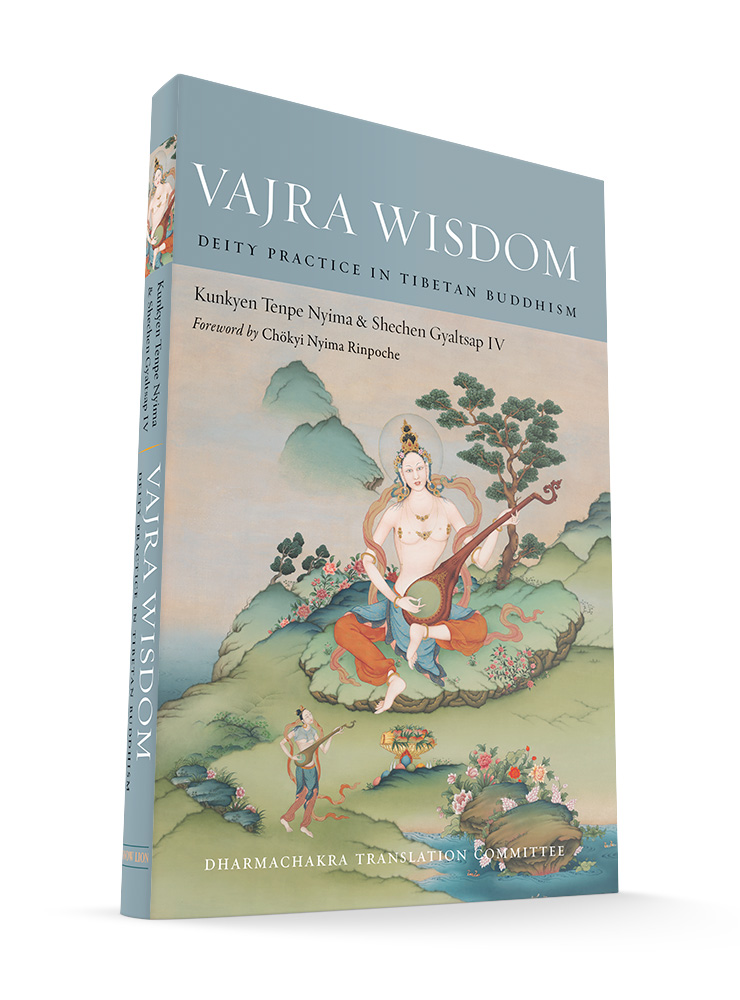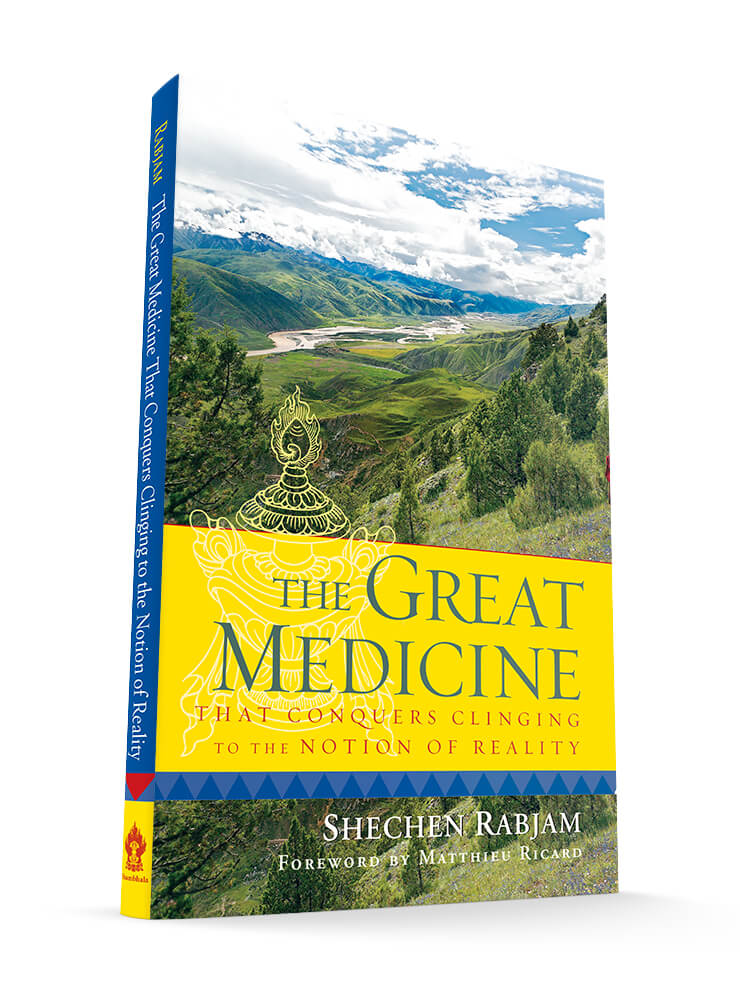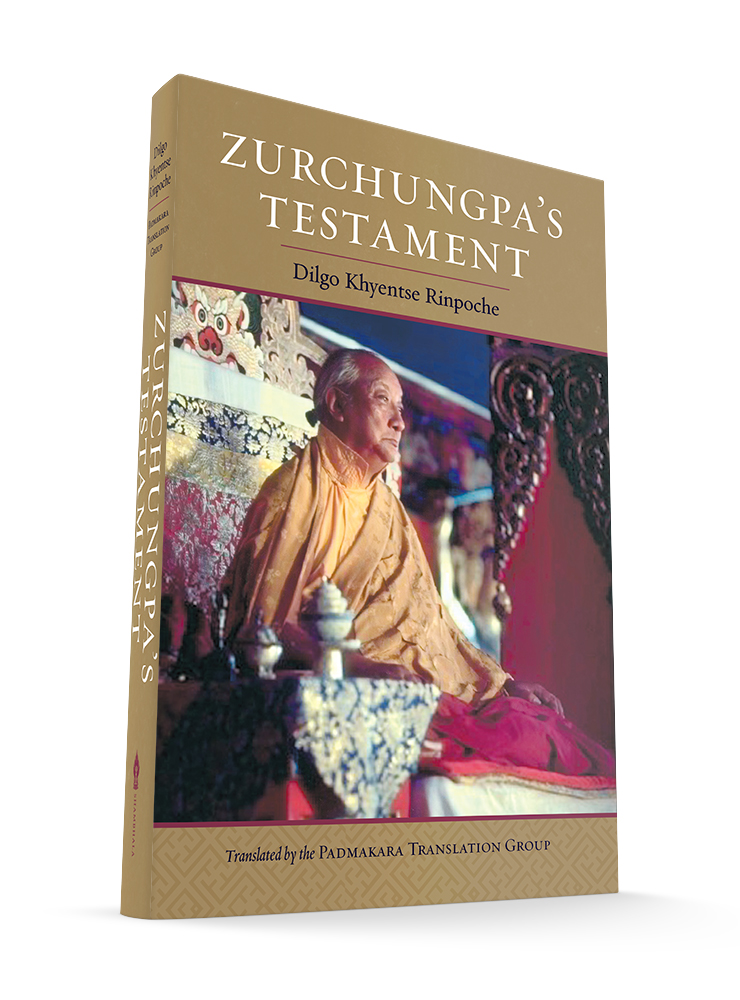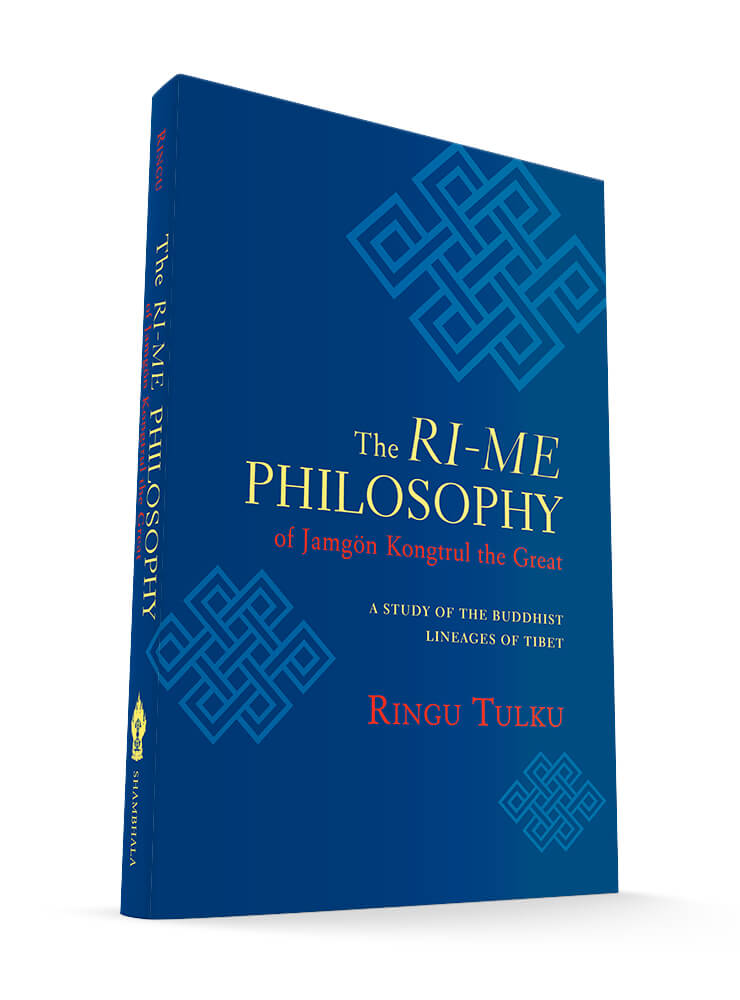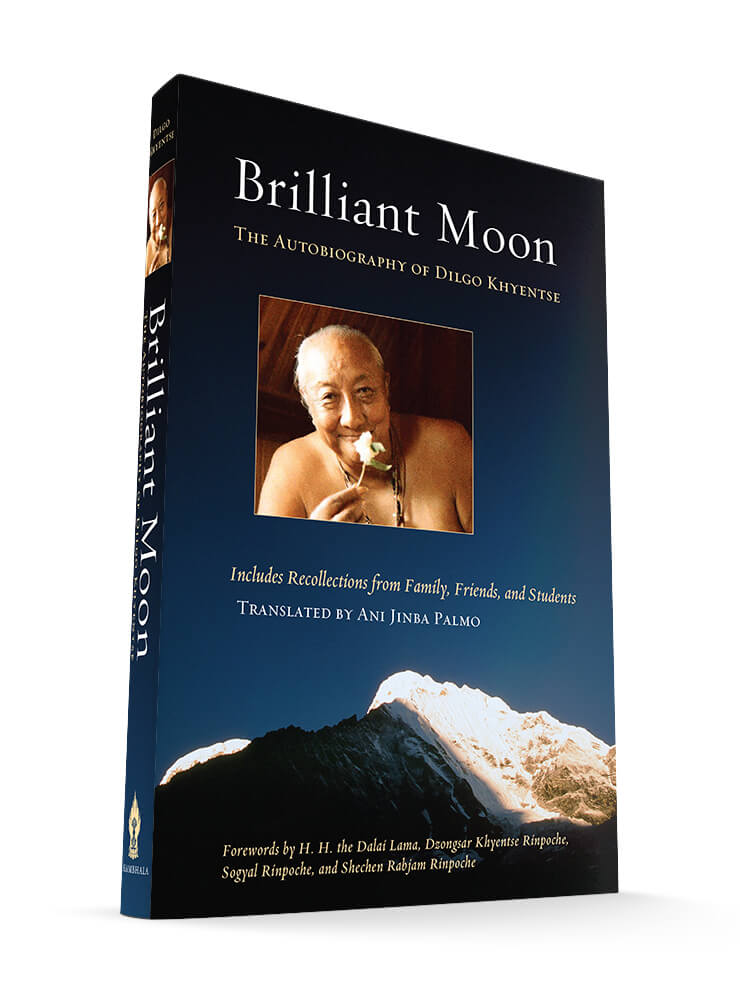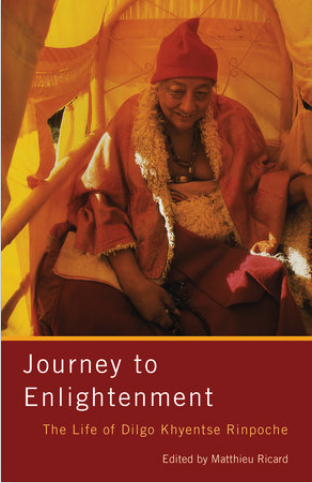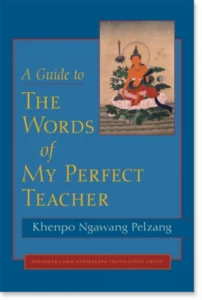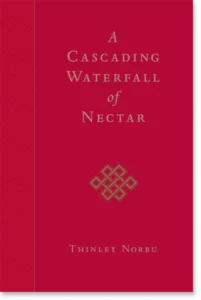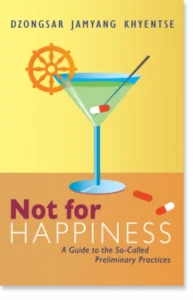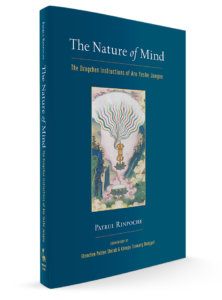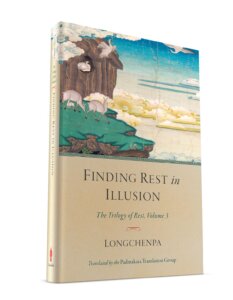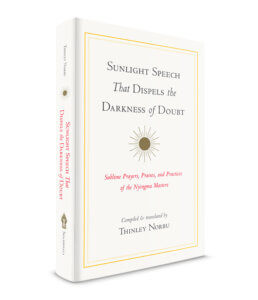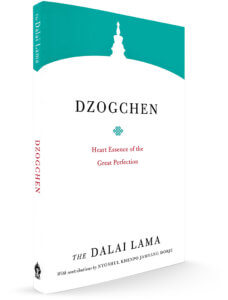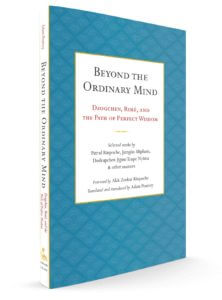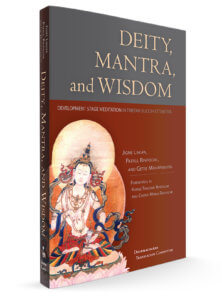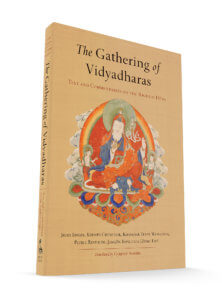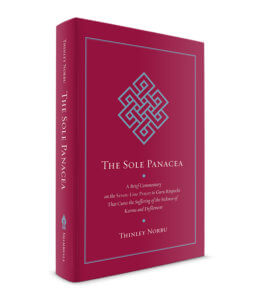Some Nyingma Lineages: Dudjom Tersar | Longchen Nyingtig | Namcho & Palyul
Guides to Other Important Nyingma Figures:
Rongzompa | Longchenpa | Jigme Lingpa | Patrul Rinpoche |
Sera Khandro | Mipham Rinpoche | Dilgo Khyentse | Dudjom Rinpoche
Shechen Gyaltsap IV
Shechen Gyaltsap (1871–1926), also known as Gyurmé Pema Namgyal, was a renowned master of the Great Perfection, or Dzogchen, the pinnacle of the Nyingma tradition of Tibetan Buddhism. He was one of Jamgön Mipham Rinpoche’s closest disciples and the root teacher of Dilgo Khyentse Rinpoche. He is thus a wellspring of the wisdom and accomplishments of the present generation of teachers.
Shechen Gyaltsap IV
-
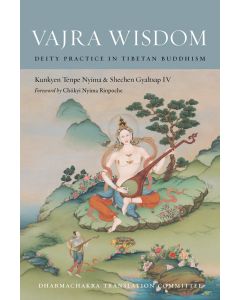 Vajra Wisdom$24.95- Paperback
Vajra Wisdom$24.95- PaperbackBy Kunkyen Tenpe Nyima
By Shechen Gyaltsap IV
Foreword by Chokyi Nyima Rinpoche
Translated by Dharmachakra Translation Committee
By Shechen Gyaltsap Gyurme Pema Namgyal -
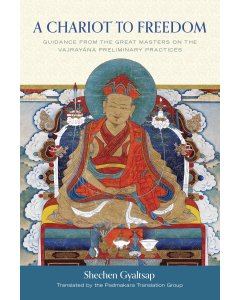 A Chariot to Freedom$39.95- Hardcover
A Chariot to Freedom$39.95- Hardcover -
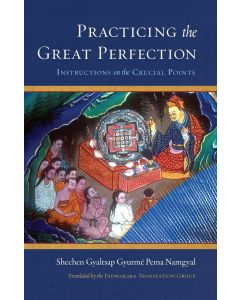 Practicing the Great Perfection$29.95- Hardcover
Practicing the Great Perfection$29.95- Hardcover -
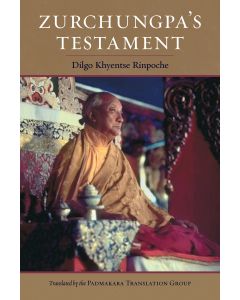 Zurchungpa's Testament$29.95- Paperback
Zurchungpa's Testament$29.95- PaperbackBy Dilgo Khyentse
Translated by Padmakara Translation Group
By Zurchung Sherab Trakpa
By Shechen Gyaltsap IV
By Shechen Gyaltsap Gyurme Pema Namgyal -
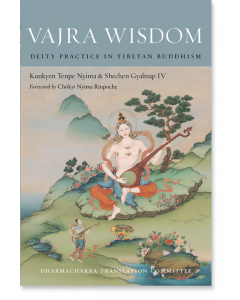 Vajra Wisdom$24.95- Hardcover
Vajra Wisdom$24.95- Hardcover -
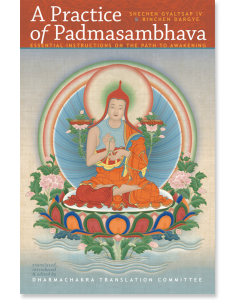 A Practice of Padmasambhava$21.95- Paperback
A Practice of Padmasambhava$21.95- Paperback -
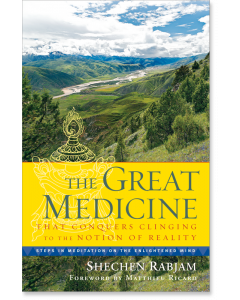 The Great Medicine That Conquers Clinging to the Notion of Reality$19.95- Paperback
The Great Medicine That Conquers Clinging to the Notion of Reality$19.95- PaperbackBy Shechen Rabjam
By Shechen Gyaltsap IV
Foreword by Matthieu Ricard
By Shechen Gyaltsap Gyurme Pema Namgyal
GUIDES
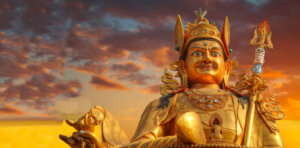
Padmasambhava: A Reader's Guide to Guru Rinpoche

We begin this Reader’s Guide to Guru Rinpoche, also known as Padmasambhava, with some trepidation, as it is a delicate task to try and write a short article on a figure so central to the Tibetan Buddhist tradition and so revered by many, whose life and legacy are so rich. The attempt feels deficient, yet there are some great resources for practitioners that are important to highlight. Also, so many termas, or rediscovered treasures are in fact from Guru Rinpoche, that excluding them feels a bit odd but to include them would be overwhelming. In fact, there are few books in the Nyingma tradition where Guru Rinpoche is not a central figure.
This guide presumes readers already have a basic understanding of Guru Rinpoche, and how he is an historical figure and saint, considered a Buddha as well a focus of meditation in the form of the Guru, and the source of an incredible corpus of teachings.
Biographical Accounts
Hardcover | Ebook
$28.95 - Hardcover
Guru Rinpoche: His Life and Times
Introduced and translated by Ngawang Zangpo
The first half of the book includes six chapters where Ngawang Zangpo lays out an important framework for understanding Guru Rinpoche's impact and the mileiu he entered on his arrival to Tibet. These include:
- Buddhism, History, and the Truth
- Buddhist History after the Buddha
- Tibet and Asia on the Eve of Guru Rinpoché’s Arrival
- India in Guru Rinpoché’s Era
- Guru Rinpoché Now—in Print
- Timeless Guru Rinpoché and Wisdom Bridges to the Present
There are many account of Guru Rinpoche's life, and the second half of the book is collection of vitally important accounts about his life is an invaluable resource.
- A Biography of Guru Rinpoche by Jamgon Kongtrul
- The Immaculate White Lotus by Dorje Tso
- The Indian Version of the Life of Guru Rinpoche by Taranata
- The Bön Version of the Life of Guru Rinpoche by Jamyong Kyentse Wongpo
- Supplications to Guru Rinpoche in Seven Chapters by Guru Rinpoche
- Visualizations to Accompany the Supplications by Jamgon Kongtrul
Paperback | Ebook
$21.95 - Paperback
Crazy Wisdom
This fascinating book examines the life of Padmasambhava to illustrate the principle of "crazy wisdom". From this profound point of view, spiritual practice does not provide comfortable answers to pain or confusion. On the contrary, painful emotions can be appreciated as a challenging opportunity for new discovery. In particular, the author discusses meditation as a practical way to uncover one's own innate wisdom.
He uses the model of the Eight Names (or aspects of manifestations) of Guru Rinpoche, and goes through each in detail.
Trungpa Rinpoche makes a strong case that those in the west need Padmasabhava as badly as the savage and uncultured Tibetans of the eighth century.
Hardbound | Ebook
$21.95 - Hardcover
The Magical Life of the Lotus-Born
By Sherab Chodzin Kohn, illustrated by Thinley Dorji
Explore a fresh telling of the inspiring, mysterious, and magical life of the great master Padmasambhava—the Lotus-Born—who planted the seed of Buddhism in Tibet that is still blossoming today, beautifully illustrated for ages 10+.
Here, his magical life story is outlined in colorful and captivating detail, offering young readers a rare glimpse into his fierce adventures and battles that transformed Tibet, a land of malevolent spirits and wild folk, into a fertile ground for Buddhism. The rich and vibrant spiritual tradition that resulted in Tibet has thrived for over one thousand years. This timeless tale is sure to capture the imagination of future generations, just as the oral, theatrical, and written accounts of it have in the Himalayas for centuries.
The Seven Line Prayer
The Seven-Line prayer to Guru Rinpoche is one of the most ubiquitous and important prayers, performed across lineages and in particular the Nyingma tradition who commence nearly every practice with it and for which there are dedicated sadhanas based on it. Below are several of the books about it.
Visit our page dedicated to resources about the famed Seven Line Prayer
$18.95 - Paperback
Works and Practices Related to Padmasambhava
Hardcover | Ebook
$22.95 - Hardcover
A Garland of Views: A Guide to View, Meditation, and Result in the Nine Vehicles
by Padmasambhava and Mipham Rinpoche
A Garland of Views presents both a concise commentary by the eighth-century Indian Buddhist master Padmasambhava on a chapter from the Guhyagarbha Tantra on the different Buddhist and non-Buddhist philosophical views, including the Great Perfection (Dzogchen), and an explicative commentary on Padmasambhava’s text by the nineteenth-century scholar Jamgön Mipham (1846–1912).
Padmasambhava’s text is a core text of the Nyingma tradition because it provides the basis for the system of nine vehicles (three sutra vehicles and six tantra vehicles) that subsequently became the accepted way of classifying the different Buddhist paths in the Nyingma tradition.
Padmakara Translation Group translator Stephen Gethin on Garland of Views
Audiobook Sample
Audiobook (read by British actor Simon Callow)
$24.99 - Digital Audio
Paperback | Ebook
$21.95 - Paperback
A Practice of Padmasambhava: Essential Instructions on the Path to Awakening
A Practice of Padmasambhava presents two practical and compelling works related to a visualization and mantra practice of Padmasambhava. This practice is based on the most important revelation of the renowned nineteenth-century treasure revealer Chokgyur Lingpa, Accomplishing the Guru's Mind: Dispeller of All Obstacles. These two works give an introduction to the preliminary trainings, outline the primary elements of visualization practice and mantra recitation, and supply a detailed explanation of the practice of Padmasambhava's wisdom aspect, Guru Vadisimha. Through practical step-by-step instructions on this deity, the reader is guided into the general world of tantric practice common to all of Tibetan Buddhism.
Paperback | Ebook
$29.95 - Paperback
The Copper-Colored Mountain: Jigme Lingpa on Rebirth in Padmasambhava’s Pure Land
By Jigme Lingpa, George Halkias, and Christina Partsalaki
The Copper-Colored Mountain is the pure land of Padmasambhava, the Indian master who brought Buddhism to Tibet. One way in which Buddhist practitioners may be reborn in this pure land is by making aspiration prayers. This work includes a translation of one of the most famous of these aspiration prayers, composed by Jigme Lingpa, and the authors’ verse-by-verse analysis of it. Drawing on both traditional commentaries and contemporary scholarly texts, the authors show how Jigme Lingpa encodes many features of Tibetan Buddhist tantric practice in these verses, and thus they provide a feast of meaning for tantric practitioners.
Paperback | Ebook
$18.95 - Paperback
Secret Teachings of Padmasambhava: Essential Instructions on Mastering the Energies of Life
By Padmasambhava, translated by Kennard Lipman
Translations of several short but important texts on Innermost Essence of the Dakini (Khadro Nyingtig).
These two teachings of Padmasambhava, The Fivefold Essential Instruction and A Section of Hidden Instruction, the Innermost Essence of the Dakini, are certainly of interest to the serious practitioner of the Vajrayana. They not only present well-known tantric teachings of channels (tsa), energy (lung), and potencies (tigle) in a clear and practical way, but they also offer us a unique Dzogchen perspective on them. In addition, they give us a glimpse into life on retreat with two of the greatest masters of Tibetan Buddhism, Padmasambhava and Yeshe Tsogyal.
Paperback | Ebook
$16.95 - Paperback
The Tibetan Book of the Dead: The Great Liberation through Hearing in the Bardo
By Padmasambhava, Karma Lingpa. Translated and introduced by Chögyam Trungpa and Francesca Freemantle
Written by Guru Rinpoche, rediscovered as a terma by Karma Lingpa, and translated and introduced by Chögyam Trungpa and Francesca Freemantle, this work is traditionally read aloud to the dying to help them attain liberation—death and rebirth are seen as a process that provides an opportunity to recognize the true nature of mind. This translation of The Tibetan Book of the Dead emphasizes the practical advice that the book offers to the living. The insightful commentary by Chögyam Trungpa, written in clear, concise language, explains what the text teaches us about human psychology.
Paperback | Ebook
$24.95 - Paperback
Self-Liberation through Seeing with Naked Awareness
By Padmasambhava, Karma Lingpa, and John Myrdhin Reynolds
Teaching the attainment of Buddhahood in a single lifetime, this text was written and concealed by Guru Padmasambhava in the eighth century and rediscovered six centuries later by Karma Lingpa. The commentary by the translator is based on the oral teachings of Namkhai Norbu Rinpoche and Lama Tharchin Rinpoche.
Paperback | Ebook
$29.95 - Paperback
Gesar: Tantric Practices of the Tibetan Warrior King
By Mipham Rinpoche, Orgyen Tobgyal Rinpoche, Chogyam Trungpa. Introduced and translated by Gyurme Avertin
The King, protector, and deity Gesar of Ling is intimately connected with Guru Rinpoche. In his Garland of Jewels, Mipham Rinpoche explains that "The lords of the three families are Manjushri, Avalokiteshvara, and Vajrapani; their magical manifestation is Guru Rinpoche; and his emanation is Gesar Norbu Dradul. As Gesar prayers often specify, the 'emanation of Padma and the three families, Great Lion Gesar." This work explains the connection in several sections.
Orgyen Tobgyal relates:
Basically, the deity Gesar doesn’t exist; he is simply Guru Rinpoche in the form of a drala—a form he takes to help raise the windhorse of sentient beings. Guru Rinpoche is also the embodiment of the enlightened qualities of all the buddhas. His enlightened activities are unfathomable, but a small fraction took place in the Land of Ling, 'the awe-inspiring Ma valley' in Kham—this is what it’s called in all the stories written about Gesar.
Books on Some of Guru Rinpoche's Contemporaries
$34.95 - Paperback
By: Gyalwa Changchub & Namkhai Nyingpo & Padmakara Translation Group
The Life and Visions of Yeshe Tsogyal
$24.95 - Paperback
By: Chonyi Drolma & Dzongsar Jamyang Khyentse & Drime Kunga & Yeshe Tsogyal
We also encourage readers to explore the excellent series of books on Padmasambhava, Following in Your Footsteps, published by Rangjung Yeshe Publications.
Additional Resources

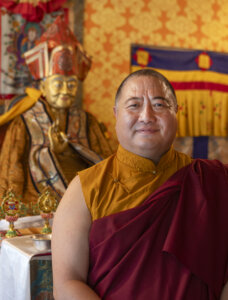
Rabjam Rinpoche in US September and October 2023: A Reader's Guide
Rabjam Rinpoche in US September - October 2023
Rabjam Rinpoche will be offering teachings and empowerments in New York, Montana, and Colorado in September and October 2023. Below you will find reading recommendations to complement these special teachings and empowerments.
New York
September 30-October 4
Montana
October 6-11
Colorado
October 13-15, Lojong Teachings
October 21: Rabjam Rinpoche Bestowing The Sadhana Of Mahamudra Abhisheka
October 22nd: Rabjam Rinpoche Bestowing Guhyagarbha And White Manjushri Abhishekas
The Great Medicine That Conquers Clinging to the Notion of Reality: Steps in Meditation on the Enlightened Mind
Rinpoche's main book is his commentary on the works of the previous Shechen Gyaltsap. In these inspiring teachings on how to open the heart, a contemporary Tibetan Buddhist master shows us how to change our self-centered attitude and develop concern for the well-being of others. He teaches that when we acknowledge our own wish for happiness, we realize that all beings wish for the same. With a broader perspective, we can develop the strength to extend gratitude and kindness first to those we love, and eventually to everyone.
In his warm and informal style, Rabjam offers accessible Buddhist teachings that will appeal to anyone who would like to find more meaning in life. Based on classical Tibetan teachings, his commentary is fresh, humorous, and sharply insightful. Here is a modern Tibetan teacher who appreciates the challenges of living in today’s world. The Great Medicine will help contemporary readers draw on ancient teachings to find their way to wisdom, freedom, and joy amid the struggles of real life.
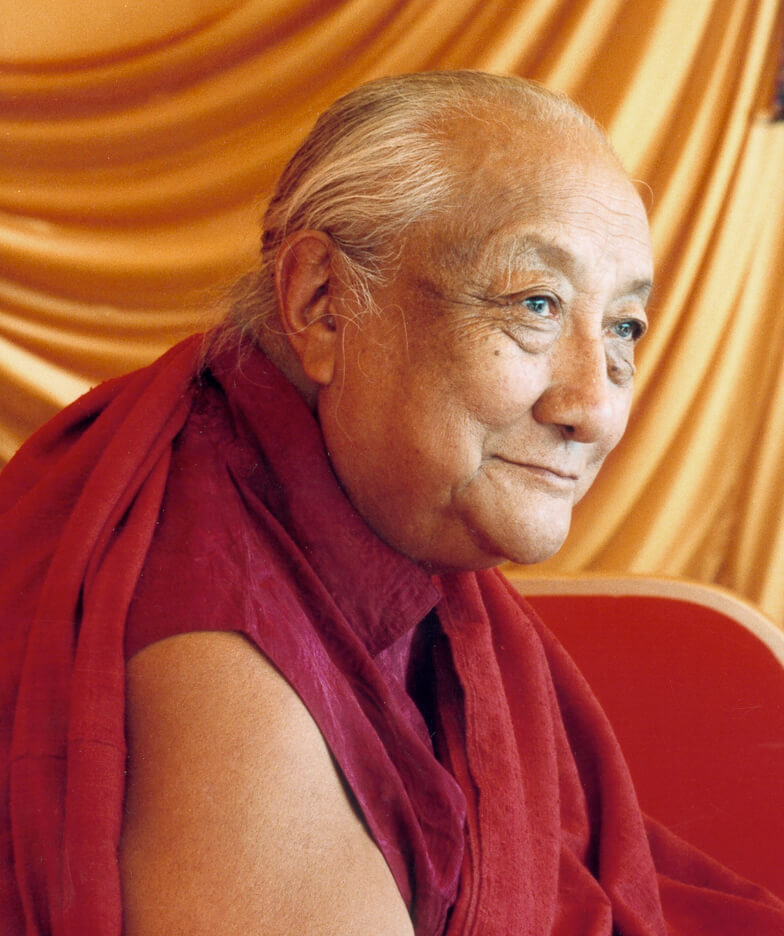
The Works of Dilgo Khyentse Rinpoche
Many of the teachings and empowerments come through Rabjam Rinpoche's grandfather the great Dilgo Khyentse Rinpoche.
Shechen Gyaltsap Gyurme Pema Namgyal
Shechen Gyaltsap is one of the main figures in the lineage held by Rabjam Rinpoche. He recently gave the reading transmisiion to his works to many thousands.
Visit our guide to the works of Shechen Gyaltsap Gyurme Pema Namgyal.
Rinpoche will be teaching on his grandfather's famous commentary, Enlightened Courage, on this essential teacing of mind training, or lojong. Participants may benefit from having read it prior to the teaching.
The Sadhana of Mahamudra
On October 21st in Boulder, Rinpoche will bestow the abhisheka for the Sadhana of Mahamudra.
Included in Volume Five of the Collected Works of Chogyam Trungpa are excerpts from The Sadhana of Mahamudra, the tantric text that Chögyam Trungpa received as terma in Bhutan in 1968. This is followed by ‘‘Joining Energy and Space,’’ an article based on some of the teachings that he subsequently gave to his students about the significance of the sadhana. The Sadhana of Mahamudra brings together the ultimate teachings from two great Tibetan spiritual lineages: the dzogchen, or maha ati, teachings of the Nyingma and the mahamudra teachings of the Kagyu.
The Collected Works of Chogyam Trungpa: Volume Five
$49.95 - Hardcover
The Guhyagarbha Tantra: Secret Essence Definitive Nature Just as It Is
On October 22nd, Rinpoche will bestow the empowerments for the Guhyagarbha and White Manjusri.
The Guhyagarbha is the essential tantra of the Nyingma tradition in particular, along with Longchenpa's commentary.
Note, thisbook is a restricted title, but receiving the empowerment Rinpoche is offering in Boulder will fulfill the requirement (see the book page for details). This can only be purchased from this website, it is not available in stores or online.
Note - this expected to be back in stock in September 2023. If you order it now, it will ship as soon as it arrives from the printer.
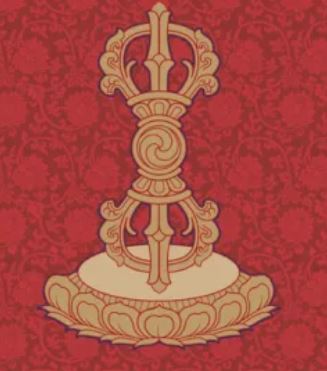
A Guide to the Guhyagarbha Tantra
We have created a spearate resource guide to the Guhyagarbha tantra and the many books related to it. We encourage you to take a look.
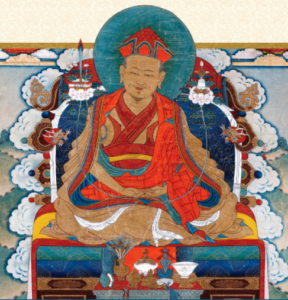
Shechen Gyaltsap: A Guide for Readers

See Also: The Nyingma School | Longchen Nyingtik | Namcho & Palyul | Dudjom Tersar
Associated Reader Guides: Dudjom Rinpoche | Jigme Lingpa | Longchenpa | Mipham Rinpoche | Patrul Rinpoche | Shechen Gyaltsap
The Life of Shechen Gyaltsap Pema Gyurme Namgyal (1871-1926)
Shechen Gyaltsap was the disciple and heart-son of Mipham Rinpoche, one of the most prominent Nyingma scholars of the late 19th and early 20th century. He studied with some of the greatest Nyingma teachers including Jamyang Khyentse Wangpo and Jamgon Lodro Thaye. He has written many extensive commentaries including an annotated commentary of Zurchungpa's Testament and Chariot to Freedom--a detailed commentary on the Vajrayana preliminary practices (ngondro).
In addition, Shechen Gyaltsap was the principle teacher of Dilgo Khyentse Rinpoche, the root teacher of many of today's great teachers including Rabjam Rinpoche, Dzongsar Khyentse Rinpoche, Dzigar Kongtrul Rinpoche, as well as the French Buddhist monk, Matthieu Ricard.
All phenomena remain in the expanse
Of beginningless time;
Since this is the case,
All sentient beings can achieve nirvana
— by Shechen Gyaltsap Pema Namgyal, from The Great Medicine
Shechen Gyaltsap Pema Gyurme Namgyal is often referred to as the Fourth. However, as noted in Practicing the Great Perfection:
The numbering of the incarnations in the Shechen Gyaltsap lineage is somewhat complicated. The first in line was a master known as Aja Lama Drupwang Pema Gyaltsen. His incarnation, Pema Sangak Tendzin Chögyal was referred to as Shechen Gyaltsap, the “regent of Shechen,” in the sense that he was the regent or representative of the previous incarnation. The name “Gyaltsap” therefore begins only with the second incarnation and cannot, logically speaking, be applied retrospectively to the first. As the incarnation of the second Gyaltsap, Orgyen Rangjung Dorje, Gyurmé Pema Namgyal is consequently counted as the third Shechen Gyaltsap, even though he is the fourth in the incarnation line.
In Journey to Enlightenment, Dilgo Khyentse Rinpoche recalls his teacher Shechen Gyaltsap with the following:
"Generally speaking, my teacher Shechen Gyaltsap appeared to genuinely possess all the qualifications of a master that are taught in the sutras and tantras, and he was especially grounded in the experience of the highest view of the Great Perfection as it is. Subsequently, when I studied, reflected, and pretended to teach these aspects, I felt that having the good fortune to actually receive such a golden doctrine like a wish-fulfilling gem from my precious master, the perfect Buddha, made gaining a human birth worthwhile, and I felt even more devoted and inspired than usual.
Even nowadays, while pretending to teach these aspects, I keep my precious master in mind and feign to invoke him to make the exposition and study meaningful. While he was giving empowerments, I was often overwhelmed by the splendor and magnificence of his expression and his eyes as, with a gesture pointing in my direction, he introduced the nature of mind. I felt that, apart from my own feeble devotion that made me see the teacher as an ordinary man, this was in fact exactly the same as the great Guru Padmasambhava himself giving empowerments to the twenty-five disciples. My confidence grew stronger and stronger, and when again he would gaze and point at me, asking “What is the nature of mind?,” I would think with great devotion, “This is truly a great yogi who can see the absolute nature of reality!” and I began to understand myself how to meditate.
On my next visit to Shechen, I received ordination as a novice monk from Gyaltsap Rinpoche. Khenpo Shenga had already given me these vows once, but I told Gyaltsap Rinpoche that I would like to receive them again from him. He replied that it was legitimate to receive vows twice, just as a stupa can be embellished with several layers of gold."
Latest Releases
A Chariot to Freedom: Guidance from the Great Masters on the Vajrayana Preliminary Practices
While less well known compared to Patrul Rinpoche's Words of My Perfect Teacher, Shechen Gyaltsap's A Chariot to Freedom, is a highly respected set of teachings intended for the practice of ngöndro. As it is not specific to a single lineage, it is univerally applicable no matter which ngondro one is engaged with, and universally beloved throughout Tibet.
According to the Buddhist tradition, one can only make progress with a mind that is properly directed toward enlightenment. Included in his teachings on the 'four thoughts that turn the mind,' Shechen Gyaltsap gives a clear introduction to the importance of appreciating one's precious human life, considering on the reality of impermanence and eventual death, understanding the role of karma, and reflecting on the defects of samsara or cyclic existence. Furthermore, he offers guidance and encouragement for completing the 5 x 1000,000 states of the uncommon preliminaries.*
According to the tradition, the ngöndro (translated literally as 'before going') is completed in order to accumulate the appropriate qualities of mind, such as mental calm, clarity, renunciation, and devotion, in order to continue along the Vajrayana path.
*The 'uncommon preliminaries' includes the accumulation of 100,000 recitations of refuge with prostrations, 100,000 recitations of the bodhichitta prayer, 100,000 vajrasattva mantra, 100,000 mandala offerings, and 1,000,000 vajra guru mantras.
Practicing the Great Perfection: Instructions on the Crucial Points
A set of essential works on Dzogchen by Shechen Gyaltsap. Included here are essential instructions for those who practice, or aspire to practice, the teachings of the Great Perfection. Written with a clear simplicity that belies their profundity, these teachings give practical and pointed advice on how to meditate on the nature of mind, self-arisen primordial wisdom, and how to sustain this practice in daily life. They begin with an extensive reflection on the problem of self-clinging and the analytical meditation designed to uproot it, and proceed to more specific instructions for the mind practice itself, at all times insisting on the fundamental, indispensable attitudes of renunciation and bodhichitta—the determination to awaken for the benefit of all beings.
The translators' introduction, filled with wonderful stories, also gives extensive and fascinating background to Shechen Gyaltsap's life and works.
Advice for Awakening on the Vajrayana Path
"Generally speaking, my teacher Shechen Gyaltsap appeared to genuinely possess all the qualifications of a master that are taught in the sutras and tantras, and he was especially grounded in the experience of the highest view of the Great Perfection as it is. Subsequently, when I studied, reflected, and pretended to teach these aspects, I felt that having the good fortune to actually receive such a golden doctrine like a wish-fulfilling gem from my precious master, the perfect Buddha, made gaining a human birth worthwhile, and I felt even more devoted and inspired than usual."
-Dilgo Khyentse Rinpoche
A Practice of Padmasambhava: Essential Instructions on the Path to Awakening
by Shechen Gyaltsap, Rinchen Dargye and translated by Dharmachakra Translation Committee
A Practice of Padmasambhava presents two practical and compelling works related to a visualization and mantra practice of Padmasambhava. This practice is based on the most important revelation of the renowned nineteenth-century treasure revealer Chokgyur Lingpa, Accomplishing the Guru's Mind: Dispeller of All Obstacles. These two works give an introduction to the preliminary trainings, outline the primary elements of visualization practice and mantra recitation, and supply a detailed explanation of the practice of Padmasambhava's wisdom aspect, Guru Vadisimha. Through practical step-by-step instructions on this deity, the reader is guided into the general world of tantric practice common to all of Tibetan Buddhism.
by Shechen Gyaltsap, Kunkyen Tenpe Nyima and translated by Dharmachakra Translation Committee
Vajra Wisdom presents the commentaries of two great nineteenth-century Nyingma masters that guide practitioners engaged in development stage practice through a series of straightforward instructions. The rarity of this kind of material in English makes it indispensable for practitioners and scholars alike.
Shechen Gyaltsap's work is entitled Illuminating the Jeweled Mirror and is a general guidebook for development stage practitioners of any particular yidam deity. In that way it serves the purpose of tying together the features of all sādhanas, thus highlighting their universal functions and meaning.
*The hardcover is out of print but the paperback edition will be released in 2022
The Great Medicine That Conquers Clinging to the Notion of Reality
by Shechen Rabjam and Shechen Gyaltsap IV
The basis of this book is Shechen Gyalstap's work of the same name that is a concise, profound, and elegant elucidation of the relative and absolute bodhichitta, or “enlightened mind.”
In his warm and informal style, Rabjam Rinpoche shines a light on these teachings in a way that will appeal to anyone who would like to find more meaning in life. His commentary is fresh, humorous, and sharply insightful. Here is a modern Tibetan teacher who appreciates the challenges of living in today’s world. The Great Medicine will help contemporary readers draw on ancient teachings to find their way to wisdom, freedom, and joy amid the struggles of real life.
Zurchungpa's Testament
by Dilgo Khyentse Rinpoche and Shechen Gyaltsap and translated by Padmakara Translation Group
Zurchungpa’s Eighty Chapters of Personal Advice is the distillation of a lifetime’s experience and practical instructions from a master who truly embodied the teachings of the Great Perfection. Organized into eighty chapters covering the entire path of Dzogchen, this book contains a complete detailed teaching on Zurchungpa’s text by Dilgo Khyentse Rinpoche, based on Shechen Gyaltsap’s notes. Originally intended as essential instructions for a group of practitioners in three-year retreat, it will undoubtedly serve as an indispensable guide to anyone who seriously wishes to practice the Great Perfection.
Watch scholar and translator Stephen Gethin of Padmakara Translation Group discuss Zurchungpa's Testament.
Other Books Related to Shechen Gyaltsap
In talking about the inseparability of emptiness and compassion, emptiness is not a common sort of emptiness, like a house without people in it, nor is it the emptiness found through logical examination. It transcends these.
-Shechen Gyaltsap, from The Ri-me Philosophy of Jamgon Kongtrul the Great
The Ri-me Philosophy of Jamgon Kongtrul the Great: A Study of the Buddhist Lineages of Tibet
by Ringu Tulku and translated by Ann Helm
Along with many scholars and practitioners of the 19th and 20th century, Shechen Gyaltsap spoke of the importance of upholding lineage while remaining respectful of other Buddhist traditions. Ringu Tulku includes Shechen Gyaltsap's extraordinary Refutation of the Criticism of the Dzogchen Teachings along with a number of Nyingma rebuttals and a detailed history of the various Buddhist schools of Tibet.
Brilliant Moon: The Autobiography of Dilgo Khyentse
by Dilgo Khyentse Rinpoche, Rabjam Rinpoche, Dzongsar Khyentse Rinpoche, and Many More
Through lively anecdotes and stories this highly revered Buddhist meditation master and scholar tells about his life of study, retreat, and teaching. The formative events of Dilgo Khyentse Rinpoche’s life, and those insights and experiences that caused him to mature into the warm, brilliant, and highly realized meditation master and teacher he was, are deeply inspiring.
Stories of Shechen Gyaltsap abound.
The second half of the book comprises recollections by his wife; his grandson, Shechen Rabjam Rinpoche; Tenga Rinpoche; the Queen Mother of Bhutan; and many prominent teachers.
Journey to Enlightenment: The Life of Dilgo Khyentse Rinpoche
by Matthieu Ricard
An inspiring portrait of one of the great spiritual leaders of the twentieth century, this book follows Dilgo Khyentse Rinpoche in his travels to Tibet, Bhutan, India, and Nepal, revisiting important places from his past. The book recounts many stories of his root teacher, Shechen Gyaltsap.
More from Shechen Gyaltsap's Lineage
While not by or on Shechen Gyaltsap, the books below are from the same traditions he is associated and are complementary to his works.
On Ngondro in the Nyingma Tradition
On the Nyingma Path
Primordial Purity
Oral Instructions on the Three Words That Strike the Vital Point
By Patrul Rinpoche and Dilgo Khyentse Rinpoche
Three Words That Strike the Vital Point is the famous seminal statement by Garap Dorje that is said to encapsulate all the myriad dzogchen tantras. The key instructions on it by Patrul Rinpoche—the verses known as “The Special Teaching of Khepa Shri Gyalpo”—form the basis for the discourse in Primordial Purity. It explains that in dzogchen, when one has fully recognized that all the confusion of samsara is the expressive power of great emptiness, confusion is spontaneously liberated into the primordial purity of mind’s essential nature. Compassion spontaneously arises, accomplishing the benefit of sentient beings. Dilgo Khyentse Rinpoche illuminates this beautifully in this profound work, which will inspire students of Buddhism and deepen their experiential appreciation of the teachings.
The Nature of Mind
The Dzogchen Instructions of Aro Yeshe Jungne
by Patrul Rinpoche, Khenpo Palden Sherab, and Khenpo Tsewang Dongyal
The Nature of Mind: The Dzogchen Instructions of Aro Yeshe Jungne is a commentary on a fascinating text by Patrul Rinpoche by the Khenpo brothers Palden Sherab and Tsewang Dongyal. It is centered around a translation of Patrul Rinpoche's Clear Elucidation of True Nature: An Esoteric Instruction on the Sublime Approach of Ati. This text Patrul put together to encapsulate all the teachings from the Aro tradition in a single short text. It is a pithy guide to discovering the nature of your own mind and gives explicit instructions on how to do so for those of us of superior, middling, and lesser capabilities. It is superb.
Finding Rest in Illusion
The Trilogy of Rest, Volume 3
By Longchenpa and translated by Padmakara Translation Group
This, the third volume of the Trilogy of Rest, introduces us to our most basic nature—the clear and pristine awareness that is the nature of the mind. The Padmakara Translation Group has provided us with a clear and fluid new translation of the final volume, Finding Rest in Illusion, along with its autocommentary, The Chariot of Excellence, which describes in detail the conduct of those who have stabilized their recognition of the nature of the mind and how to apply the Buddhist view when relating to ordinary appearances. This is an invaluable manual for any genuine student of Buddhism who wishes to truly find rest through the path of the Great Perfection.
Sunlight Speech That Dispels the Darkness of Doubt
Sublime Prayers, Praises, and Practices of the Nyingma Masters
Trasnlated by Thinley Norbu Rinpoche
Another superb translation of the root text of Patrul Rinpoche's The Practice of the View, Meditation, and Action, Called “The Sublime Heart Jewel”, The Speech Virtuous in the Beginning, Middle, and End is included in Thinley Norbu Rinpoche's collection of translations entitled Sunlight Speech That Dispels the Darkness of Doubt. This text presents advice to practitioners on the path to enlightenment, which is all contained in the three aspects of the correct view, meditation, and action, synthesized in the practice of the Six-Syllable Mantra of Avalokiteshvara.
Dzogchen
Heart Essence of the Great Perfection
by His Holiness the Dalai Lama
While his Holiness is the head of the Gelug school, here he teaches on an important text of the Nyingma school--Patrul Rinpoche's commentary to Garab Dorje's famous Three Words That Strike the Vital Point, also using other texts such as Longchenpa's Cho Ying Dzod, or Treasury of Dharmadhatu.
Beyond the Ordinary Mind
Dzogchen, Rimé, and the Path of Perfect Wisdom
Translated by Adam Pearcey
Beyond the Ordinary Mind, an extraordinary collection of profound advice on Dzogchen from many great masters, compiled and translated Adam Pearcey, the force behind Lotsawa House. The piece by Patrul Rinpoche is called Uniting Outer and Inner Solitude: Advice for Alak Dongak Gyatso.
Deity, Mantra, and Wisdom
Development Stage Meditation in Tibetan Buddhist Tantra
by Patrul Rinpoche, Jigme Lingpa, and Getse Mahapandita Tsewang Chokdrub
This collection contains four of the most cherished Tibetan Buddhist commentaries on the practices of visualization, mantra recitation, and meditative absorption— elements that form the core of development stage meditation, one of the most important practices of Buddhist Tantra.
The Gathering of Vidyadharas
Text and Commentaries on the Rigdzin Düpa
By Jigme Lingpa, Patrul Rinpoche, Khenpo Chemchok, Kangsar Tenpe Wangchuk, and Jamgon Kongtrul Lodro Taye
Translated by Gyurme Avertin
One of the most important sadhana cycles in the Nyingma school of Tibetan Buddhism, the Rigdzin Düpa, or Gathering of Vidyadharas, is practiced by tens of thousands of practitioners around the world. This inner guru practice focuses on Padmasambhava as the central figure and is one of the three root sadhanas of the Longchen Nyingtik treasure cycle revealed by the great Jigme Lingpa.
Sole Panacea
A Brief Commentary on the Seven-Line Prayer to Guru Rinpoche That Cures the Suffering of the Sickness of Karma and Defilement
by Thinley Norbu Rinpoche
Thinley Norbu Rinpoche also quotes this at length in Sole Panacea: A Brief Commentary on the Seven-Line Prayer to Guru Rinpoche That Cures the Suffering of the Sickness of Karma and Defilement.
Reader Guides Related to Shechen Gyaltsap
Check out more reader guides on Tibetan Buddhism!
Additional Resources

And for Tibetan readers, TBRC/BDRC of course provides downloadable pdfs of Shechen Gyaltsab's works in Tibetan

